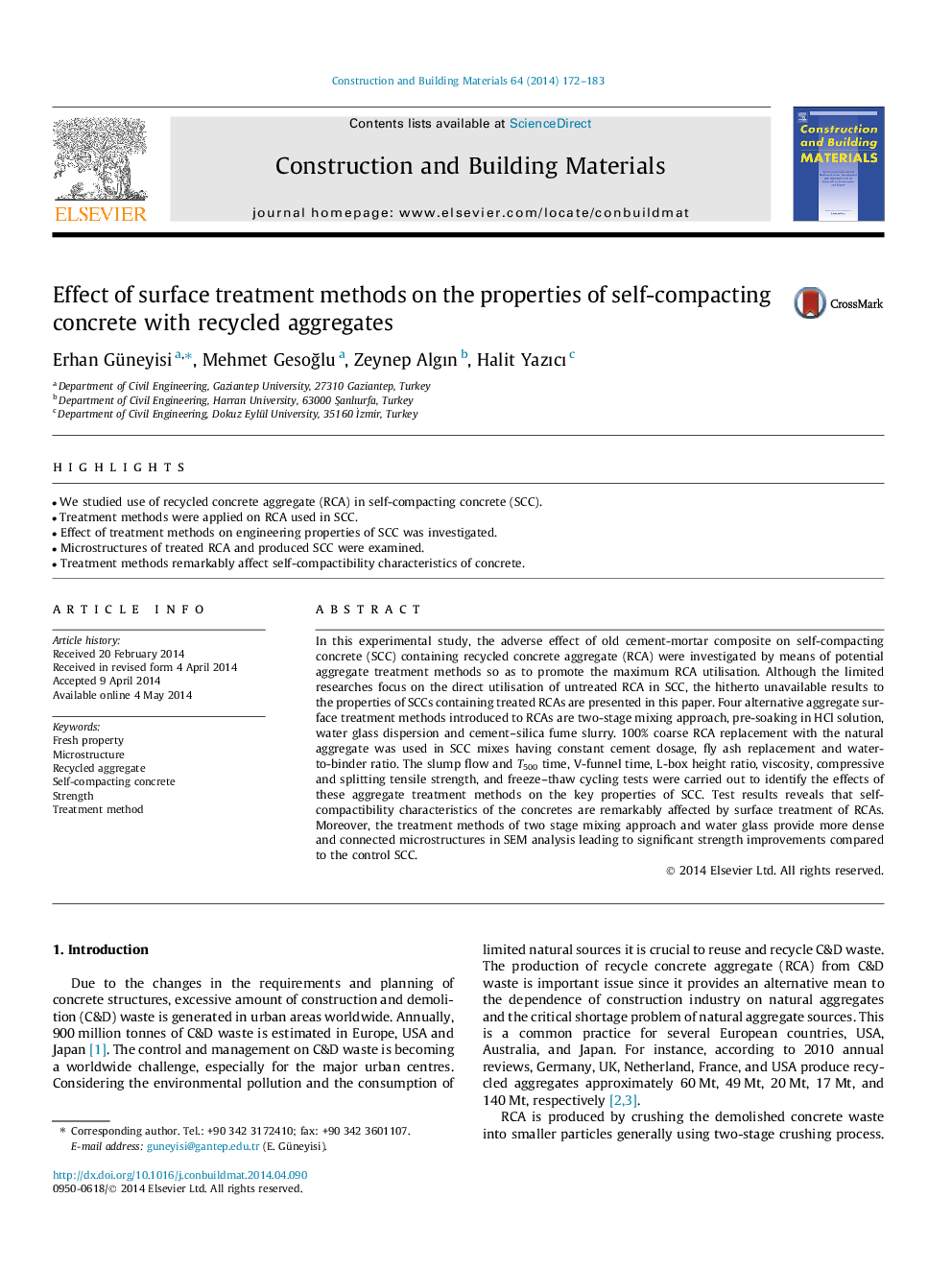| Article ID | Journal | Published Year | Pages | File Type |
|---|---|---|---|---|
| 257591 | Construction and Building Materials | 2014 | 12 Pages |
•We studied use of recycled concrete aggregate (RCA) in self-compacting concrete (SCC).•Treatment methods were applied on RCA used in SCC.•Effect of treatment methods on engineering properties of SCC was investigated.•Microstructures of treated RCA and produced SCC were examined.•Treatment methods remarkably affect self-compactibility characteristics of concrete.
In this experimental study, the adverse effect of old cement-mortar composite on self-compacting concrete (SCC) containing recycled concrete aggregate (RCA) were investigated by means of potential aggregate treatment methods so as to promote the maximum RCA utilisation. Although the limited researches focus on the direct utilisation of untreated RCA in SCC, the hitherto unavailable results to the properties of SCCs containing treated RCAs are presented in this paper. Four alternative aggregate surface treatment methods introduced to RCAs are two-stage mixing approach, pre-soaking in HCl solution, water glass dispersion and cement–silica fume slurry. 100% coarse RCA replacement with the natural aggregate was used in SCC mixes having constant cement dosage, fly ash replacement and water-to-binder ratio. The slump flow and T500 time, V-funnel time, L-box height ratio, viscosity, compressive and splitting tensile strength, and freeze–thaw cycling tests were carried out to identify the effects of these aggregate treatment methods on the key properties of SCC. Test results reveals that self-compactibility characteristics of the concretes are remarkably affected by surface treatment of RCAs. Moreover, the treatment methods of two stage mixing approach and water glass provide more dense and connected microstructures in SEM analysis leading to significant strength improvements compared to the control SCC.
